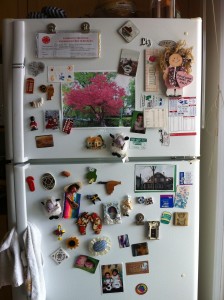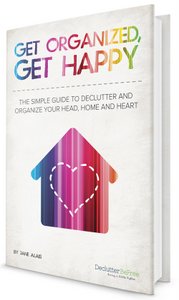How To Declutter
Are you suffering from too much stuff syndrome? Don’t know how to Declutter?
It often starts with an idea.
This idea grows into a fantasy.
The fantasy is that storing something for the future is alluring and comforting.
Things create a fantasy for the future
 When I was a teenager the idea of a hope chest really appealed to me. Just having a box stuffed with beautiful things for the future that were never used, never touched seemed really luxurious.
When I was a teenager the idea of a hope chest really appealed to me. Just having a box stuffed with beautiful things for the future that were never used, never touched seemed really luxurious.
Another aspect of the syndrome is getting entangled with the just in case thinking and I might need it one day thinking.
That idea of an endless supply of already bought things that will protect you in a crisis, a setback or any other imagined need.
Or protection from boredom with a constant steam of craft and art supplies that get put somewhere.
Being Canadian and growing up in a huge house with too much stuff seemed part necessity and part cultural.
Our huge basement stored multiples of necessities. What in olden days used to be a coal room became a huge cold room which had enough food to feed Napoleons’ army in his Russian campaign.
Then there are the just in case clothing, gardening tools, stationary supplies and food.
There are the I might need it or use it one day items which can be as small as the really strange spice you bought for the dish that you will never cook again.
Or the shoes for that special occasion that pinch and don’t match anything you own.
These things seem small but once you get trapped in that cycle of buying and keeping, the clutter really starts to pile up.
You end up with too much stuff and not enough space.
So, all good reasons for keeping things, or are they?
The Grim Reality of too much stuff
This grim reality is that most of the things you keep will end up in the garbage or given away to create clutter for other people.
This year my mother moved from our huge family home to a two bedroom apartment and my brother, sister and I had to clean out 40 years of living and it got ugly.
Most of the food in the pantry went in the garbage because it had been opened or rewrapped, we could not donate it.
A lifelong habit of buying two for the price of one instead of being used made piles of clutter.
Sentimental items like furniture, books, dinner sets were given away because no one wanted them or were so damaged they were thrown in the garbage.
So out went about 100 bags of garbage, thirty bags of clothes and boxes and boxes of office supplies, dishes and knick knacks while I unpacked and organized and reorganized 50 large boxes into a two bedroom apartment.
This was just my end of the organizing.
This experience was exhausting and made me rethink what I was storing, and why I was even saving stuff.
Asking questions creates change, so why store things?
- Who are you storing them for?
- When are the items going to be used?
- Why keep them at all?
So here are some truths about keeping things, especially those things you don’t have room for so you store them away.
The Truth about keeping things – Too much stuff not enough space
It’s a balanced equation. Stuff eats up space.
Once your cupboards are full of the I might need things and the things you never use what you really need has nowhere to go but on the floor.
Most of what you keep will never be used
Storing things for two years or forty years doesn’t make much difference. Once you store something, it sits, untouched, unused.
Out of sight is out of mind, it’s like you never had it
Out of sight is out of mind and usually means you have forgotten you own it. And you re-buy it. That’s why clutter is so expensive.
Sentimental items don’t pass the generational test
A lot of sentimental items don’t pass the generational test. Your emotional attachment and memories often mean nothing to your children.
A lot of what you keep no one else wants
Your treasure is often someone else’s trash. So if you are keeping things because someone else might treasure them think again and ask.
Many stored items suffer some kind of damage in the long-term
Many things that hit the two to ten year storage mark suffer some kind if damage. There are storage problems with mold, china chipping or cracking and insects.
Guidelines for bringing the too much stuff syndrome to a halt
- Only keep things you use at least once a year.
This includes seasonal items and those items that you use for holidays and guests.
Cull before you store
If you haven’t used it in a year there is a 95% chance you never will.
So cull clothing before you store it.
Go through your children’s art work, only keep the best
Take a second look at those stored dishes and containers and ask do you need so many, how important are they?
- Set boundaries on vintage and unused items
You may have vintage or loved items that you just need to keep.
So set boundaries.
Boundaries are set when you make a decision to keep those items in a contained space or a set size.
Deciding to keep one or two boxes of rarely used but loved items won’t create a clutter crisis or eat up the space in your home.
- Decide what is more important, the item or creating space
Re-assess what you are keeping and decide what is more important to you.
Do you need the item or the space?
What do you need to do to shift your too much stuff syndrome?

